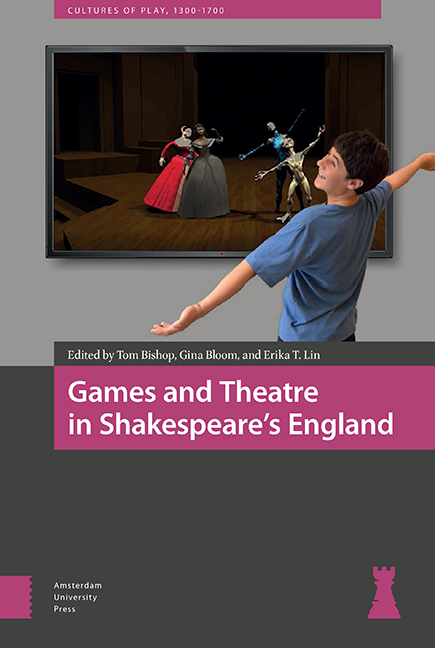10 - Shakespeare Videogames, Adaptation/Appropriation , and Collaborative Reception
Published online by Cambridge University Press: 21 October 2021
Summary
Abstract
This essay analyzes two Shakespeare-based video games to revisit longstanding assumptions regarding Shakespearean adaptation and appropriation. In it, I pay close attention to the role of the player to explore reception as a collaborative process in order to better understand the complex relationships that exist between source text, game, and player, and to expand the scope of what works are considered within Shakespearean adaptation and appropriation studies. Through a discussion of the two games, I argue that adaptation and appropriation need to be considered on a spectrum that accounts for how audiences play an active role in defining and redefining what Shakespearean adaptations and appropriations are and can be.
Keywords: Shakespeare; adaptation; appropriation; videogames; reception
As we move further into the twenty-first century, we continue to witness that, “[w]hen innovative communication platforms emerge, new Shakespeare use appears almost on point with the arrival of the new medium.” However, the appearance of new uses of Shakespeare does not always culminate in a critical mass that runs parallel to the spread of a new medium. Such is the case with videogames—a medium over 60 years old—to which Shakespeare studies has only begun to turn its attention. Though some Shakespeareans may be familiar with older titles such as Ted Castranova’s Arden (2008), Charles Crayne's Castle Elsinore (1983), or EMME Interactive’s almost impossible to obtain Hamlet: A Murder Mystery (1997), over the past decade we have witnessed a minor explosion in the number of Shakespearebased videogames. Recently, Shakespeare's plays have been adapted into videogames such as Romeo and Juliet- and Tempest-inspired games in the Globe Playground section of the Shakespeare's Globe website; Golden Glitch Studios’ Elsinore (2019), in which the player enters the fictional world of Hamlet by controlling a time-looping Ophelia in an attempt to “prevent the tragedy that lies before her”; and the two games that are the focus of this essay, Alawar's Hamlet, or The Last Game without MMORPG Features, Shaders and Product Placement (2010) and Tin Man Games’ To Be or Not to Be (2015). Videogames thrive on the interactivity between the game and the player, and as such, they present an opportunity to rethink our approaches to studying Shakespearean adaptation and appropriation. Shakespeare-based videogames reveal a collaborative process of creation and reception that evolves from players interacting with creators’ embedded narratives to creating new narrative experiences rooted as much (if not more than) in videogames as in Shakespeare.
- Type
- Chapter
- Information
- Games and Theatre in Shakespeare's England , pp. 255 - 274Publisher: Amsterdam University PressPrint publication year: 2021

